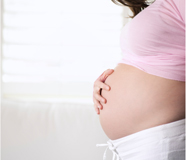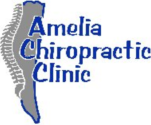Fernandina Beach Pregnancy Back Pain
 The news of being pregnant brings tears of joy … until lower back pain during pregnancy brings tears of pain!
The news of being pregnant brings tears of joy … until lower back pain during pregnancy brings tears of pain!But joy can be restored during pregnancy. Fernandina Beach pregnant mothers don’t have to simply agonize with lower back pain and/or leg pain while the baby grows. Amelia Chiropractic Clinic uses the gentlest chiropractic treatment to relieve pain for Fernandina Beach pregnant mothers just like you!
As you well know, deli meat, sugar substitutes, soft cheeses, unwashed fruits are not recommended for you and baby.(1) Nor are drugs, x-rays, and surgery the safest options for lower back pain relief during pregnancy – for mother or baby. So what do the 76% of pregnant women who have lower back pain or the 45% who have leg pain do?(2,3) They can find help from their local chiropractic office in Fernandina Beach, like Amelia Chiropractic Clinic.
Chiropractic relieves pregnancy back pain safely and gently. It’s safe.(4) It’s research-tested. It’s effective with 94% reporting significant relief in 4.5 days and 1.8 visits.(5) It’s possible to be back pain-free during your pregnancy.
Amelia Chiropractic Clinic specifically uses Cox Technic to successfully relieve pregnancy related back pain like lower back pain and leg pain for many Fernandina Beach expectant mothers. For them, this non-drug, gentle, safe spinal manipulation is a godsend. (Never fear! You don’t have to lie on your stomach!) One published paper reports a 26-year-old woman with back pain and related leg pain during pregnancy found relief in just one visit.(6) Just imagine shopping for baby or enjoying a pre-baby pedicure or manicure with no back pain or leg pain!
Read the reference articles about pregnancy back pain and chiropractic relief, then contact Amelia Chiropractic Clinic to wipe away the tears of pain and replace them again with tears of joy that most Fernandina Beach pregnant women feel.
